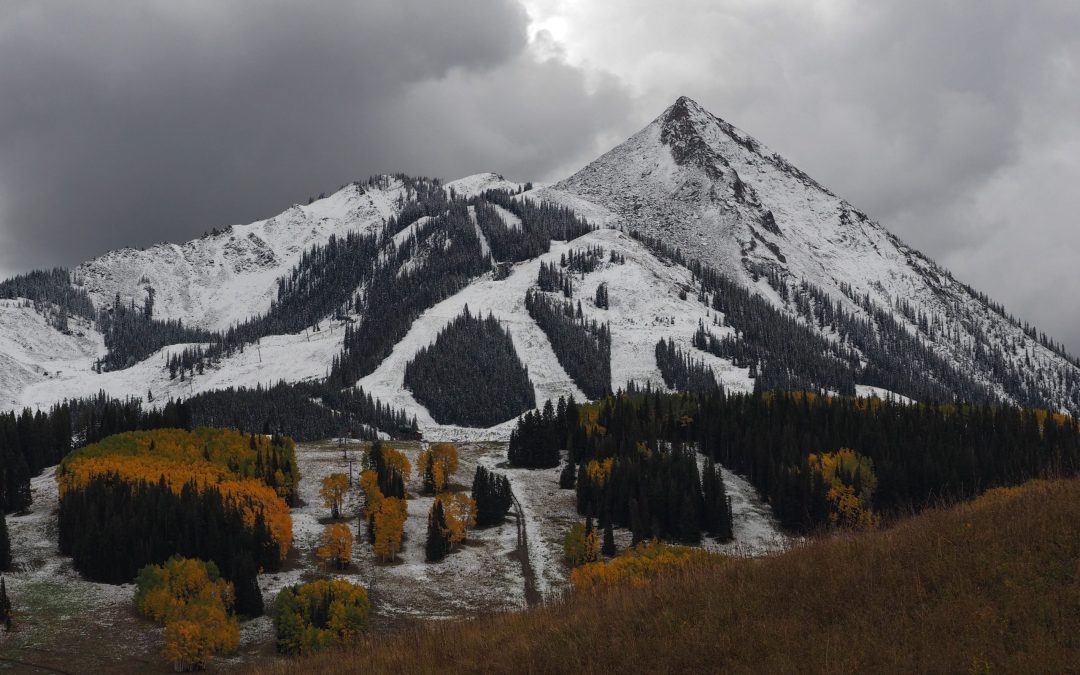Just for a moment, forget about drought and water shortages, because this year, it’s been wet in Colorado, with precipitation hitting 102% of normal.
The wet weather hasn’t pulled the state or the American West out of its naggingly, sometimes desperate, dry existence, but it has delivered some surprises, according to experts reviewing data at the state’s water monitoring committee meeting Sept. 24.
“Much of northern Colorado has been drier than normal, but areas of southern Colorado have been wetter than normal,” said Peter Goble, assistant state climatologist at Colorado State University’s climate center.
So wet, in fact, that it helped pull the statewide average above 100%.

Weather watchers, researchers and hydrologists track water based on a reporting period known as the “water year.” It begins Oct. 1 and ends Sept. 30, a time that captures the buildup of winter snowpacks and spring runoff. Most of the state’s water supplies come from these sources.
As the 2024 water year comes to a close on Monday, Peter Goble, assistant state climatologist, said the numbers were refreshingly normal, with some surprises in parts of the state normally starved for water: The Arkansas and Upper Rio Grande river basins, which routinely fall last in line when it comes to storm systems.
The Arkansas Basin, for instance, saw precipitation that topped 111% of normal, while the Rio Grande’s numbers hit 107%.
“It’s good news when we’re above average for the basin,” said Jack Goble, general manager of the Lower Arkansas Water Conservancy District in Rocky Ford in the Lower Arkansas Basin. He is not related to Peter Goble. “But as is typical, it depends on where you are. You can drive 20 or 30 miles in any direction and go from green to brown.”
In fact, according to the U.S. Drought Monitor, drought is already beginning to reappear in parts of the Arkansas Basin and other areas on the Front Range.

Another surprise: Even with ultra hot temps in places like Grand Junction, precipitation was heavy.
“Warm and wet is a bit unusual for Colorado for the summer,” Peter Goble said. “Usually it’s warmer going drier and cooler going wetter.”
The South Platte River Basin, which includes metro Denver and Fort Collins, saw a slightly different scenario, with precipitation registering slightly below normal and temperatures coming in at record highs.
“It was a hot summer,” said Nathan Elder, Denver Water’s manager of water supply. “But Denver fared all right,” in part because customers stuck to their lawn-watering schedules and the utility, the largest in the state, had a strong spring runoff that allowed its reservoirs to fill.
In fact, reservoirs across the state have healthy supplies, coming in at 93% of normal, according to Nagam Gill, a hydrologist with the Natural Resources Conservation Service in Lakewood.
“Our reservoir storage is in good shape,” Gill said, “and many basins are reporting above-average levels.”
Looking ahead, Peter Goble said there is an 80% chance that a La Niña weather pattern will develop early this winter, which could mean a delayed start to the snow season but heavy snowfall eventually for the northern Rockies. La Niña refers to a time period when colder temperatures prevail in certain parts of the Pacific Ocean.
For water utilities, a La Niña doesn’t offer much predictability in terms of next year’s water supplies, and so the go-to strategy is to keep reservoirs as full as possible.
“We’ve seen wet years and we’ve seen dry years,” Denver Water’s Elder said. “To deal with the uncertainty, we set up our system this time of year so that we have an equal chance of filling all our reservoirs, and we rely on our customers to use water wisely.”



 Print
Print